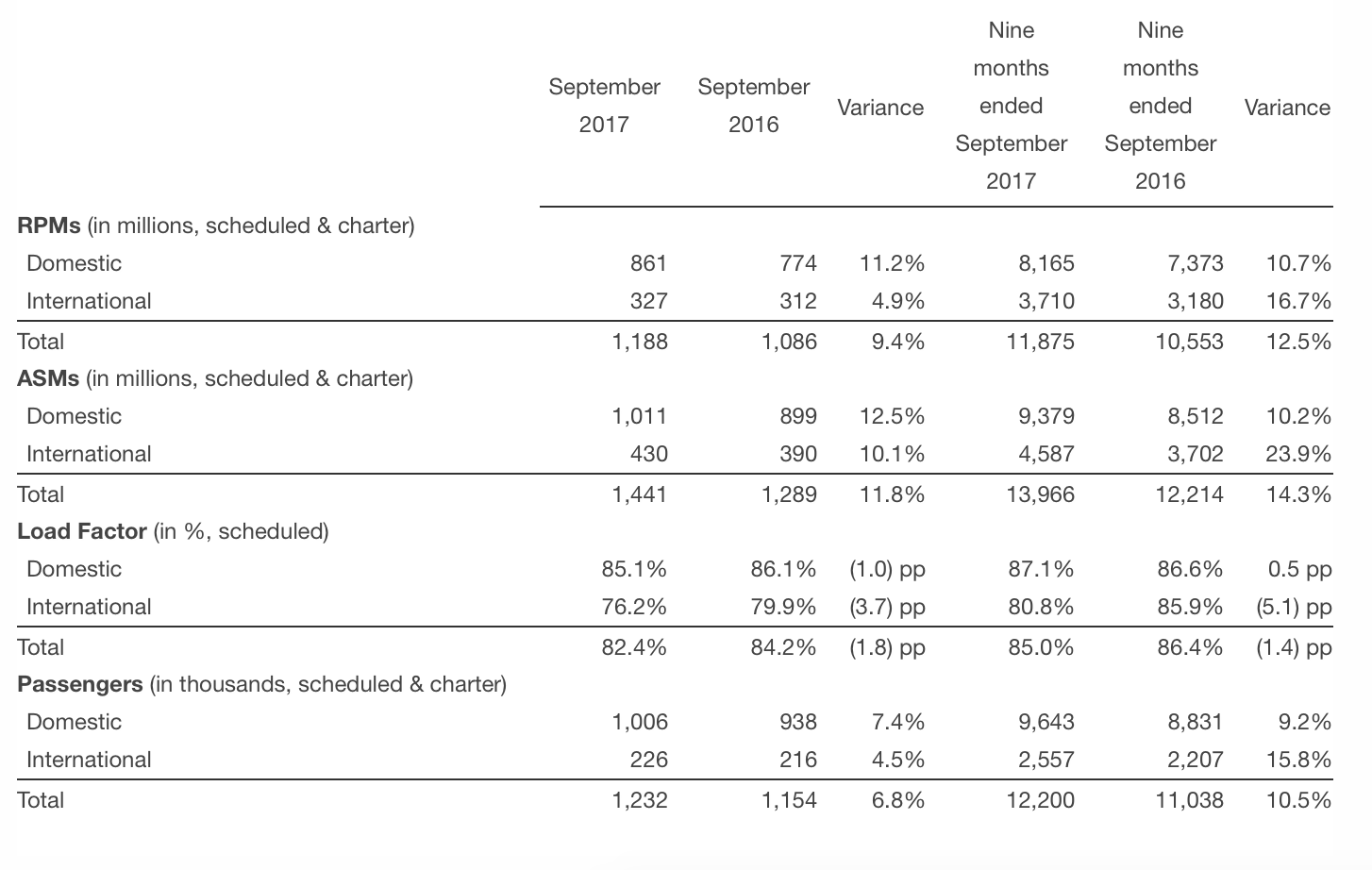Volaris* (NYSE: VLRS and BMV: VOLAR), the ultra-low-cost airline serving Mexico, the United States and Central America, reports September 2017 and year-to-date preliminary traffic results.
During September 2017, Volaris increased total capacity, as measured in Available Seat Miles (ASMs), by 11.8% year over year. Total demand, as measured in Revenue Passenger Miles (RPMs), in September 2017 increased 9.4% year over year, reaching 1.2 billion. Volaris transported a total of 1.2 million passengers during the month, an increase of 6.8% year over year. Network load factor for September was 82.4%, a decrease of 1.8 percentage points year over year.
During the first nine months of 2017, Volaris increased total capacity, as measured in Available Seat Miles (ASMs), by 14.3% year over year. Total demand, as measured in Revenue Passenger Miles (RPMs), for the nine months ended September 2017 increased 12.5% year over year, reaching 11.9 billion. Volaris transported a total of 12.2 million passengers during the first nine months of 2017, an increase of 10.5% year over year. Network load factor for the first nine months of the year was 85.0%, a decrease of 1.4 percentage points year over year.
During September 2017, Volaris started to operate two international routes (Mexico City – San Antonio, Texas and Mexico City – San Jose, Costa Rica).
During the month, Hurricanes Irma and Maria, tropical storms Max and Lidia in the Pacific, and two earthquakes that impacted 11 states in Mexico, affected operations with approximately 50 flights cancelled in eight airports, also triggering a decline in bookings for the period. Volaris worked in coordination with the federal, state, and local authorities to assist people that were stranded. We also helped our customers with free of charge changes in itineraries.
The following table summarizes Volaris traffic results for the month and year-to-date.

